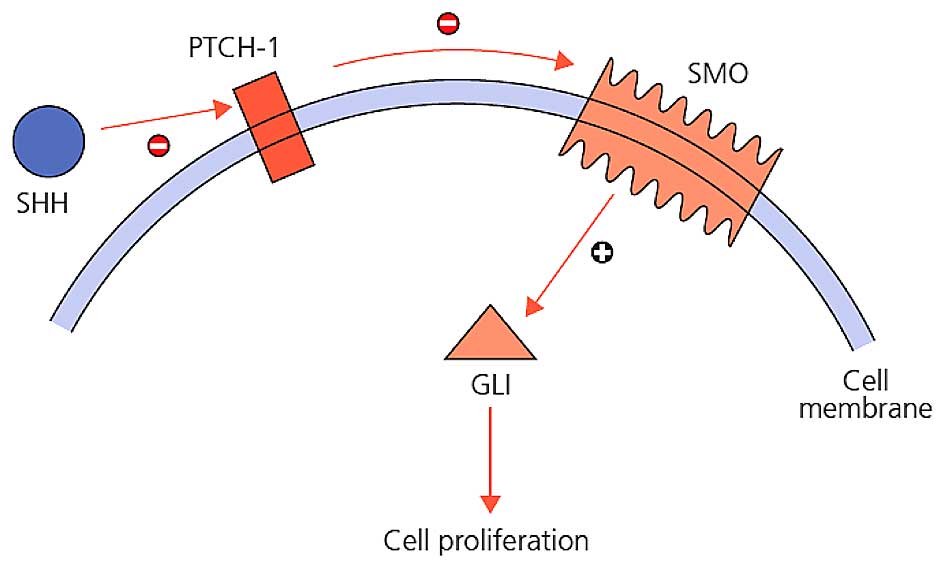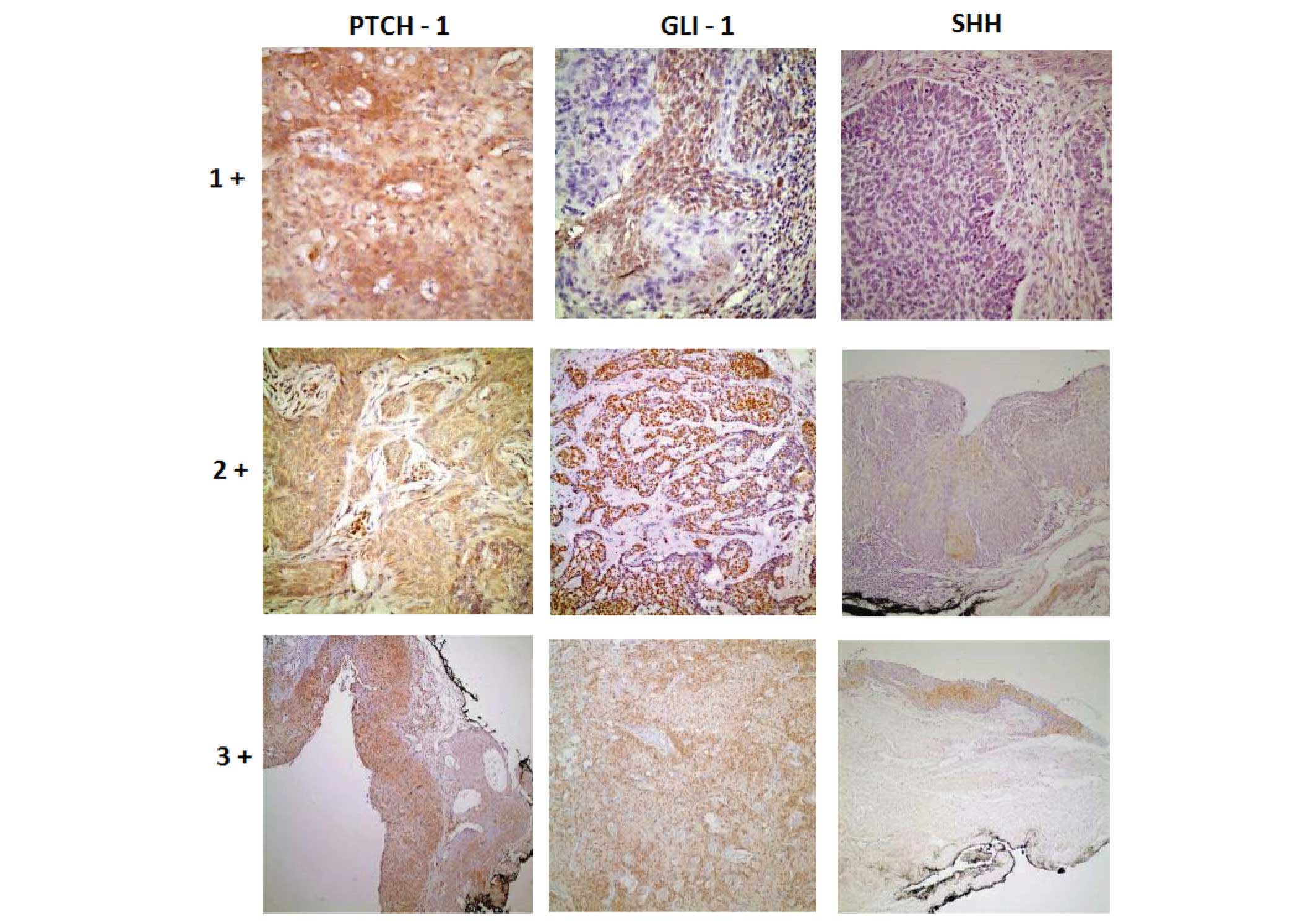|
1
|
Rosner M: Section 2 eyelid tumors basal
cell carcinoma. Clinical Ophthalmic Oncology. Singh AD, Damato BE,
Murphree AL and Perry JD: Saunders, Elsevier. (Philadelphia, USA).
76–80. 2007. View Article : Google Scholar
|
|
2
|
Margo CE and Waltz K: Basal cell carcinoma
of the eyelid and periocular skin. Surv Ophthalmol. 38:169–192.
1993. View Article : Google Scholar : PubMed/NCBI
|
|
3
|
Allali J, D'Hermies F and Renard G: Basal
cell carcinomas of the eyelids. Ophthalmologica. 219:57–71. 2005.
View Article : Google Scholar : PubMed/NCBI
|
|
4
|
Green A: Changing patterns in incidence of
non-melanoma skin cancer. Epithelial Cell Biol. 1:47–51. 1992.
View Article : Google Scholar : PubMed/NCBI
|
|
5
|
Donaldson MJ, Sullivan TJ, Whitehead KJ
and Williamson RM: Squamous cell carcinoma of the eyelids. Br J
Ophthalmol. 86:1161–1165. 2002. View Article : Google Scholar : PubMed/NCBI
|
|
6
|
Lee GA and Hirst LW: Ocular surface
squamous neoplasia. Surv Ophthalmol. 39:429–450. 1995. View Article : Google Scholar : PubMed/NCBI
|
|
7
|
Tumbar T, Guasch G, Greco V, Blanpain C,
Lowry WE, Rendl M and Fuchs E: Defining the epithelial stem cell
niche in skin. Science. 303:359–363. 2004. View Article : Google Scholar : PubMed/NCBI
|
|
8
|
Molofsky AV, Pardal R and Morrison SJ:
Diverse mechanisms regulate stem cell self-renewal. Curr Opin Cell
Biol1. 6:700–707. 2004. View Article : Google Scholar
|
|
9
|
Evangelista M, Tian H and de Sauvage FJ:
The hedgehog signaling pathway in cancer. Clin Cancer Res.
12:5924–5928. 2006. View Article : Google Scholar : PubMed/NCBI
|
|
10
|
Guerrero I and Ruizi Altaba A:
Development: Longing for ligand: Hedgehog, patched, and cell death.
Science. 301:774–776. 2003. View Article : Google Scholar : PubMed/NCBI
|
|
11
|
Toftgård R: Hedgehog signalling in cancer.
Cell Mol Life Sci. 57:1720–1731. 2000. View Article : Google Scholar : PubMed/NCBI
|
|
12
|
Hutchin ME, Kariapper MS, Grachtchouk M,
Wang A, Wei L, Cummings D, Liu J, Michael LE, Glick A and Dlugosz
AA: Sustained Hedgehog signaling is required for basal cell
carcinoma proliferation and survival: Conditional skin
tumorigenesis recapitulates the hair growth cycle. Genes Dev.
19:214–223. 2005. View Article : Google Scholar : PubMed/NCBI
|
|
13
|
Owens DM and Watt FM: Contribution of stem
cells and differentiated cells to epidermal tumors. Nat Rev Cancer.
3:444–451. 2003. View
Article : Google Scholar : PubMed/NCBI
|
|
14
|
Ruiz A, Altaba I, Stecca B and Sánchez P:
Hedgehog-Gli signaling in brain tumors: Stem cells and
paradevelopmental programs in cancer. Cancer Lett. 204:145–157.
2004. View Article : Google Scholar : PubMed/NCBI
|
|
15
|
Wolter M, Reifenberger J, Sommer C,
Ruzicka T and Reifenberger G: Mutations in the human homologue of
the Drosophila segment polarity gene patched (PTCH) in sporadic
basal cell carcinomas of the skin and primitive neuroectodermal
tumors of the central nervous system. Cancer Res. 57:2581–2585.
1997.PubMed/NCBI
|
|
16
|
Chidambaram A, Goldstein AM, Gailani MR,
Gerrard B, Bale SJ, DiGiovanna JJ, Bale AE and Dean M: Mutations in
the human homologue of the Drosophila patched gene in Caucasian and
African-American nevoid basal cell carcinoma syndrome patients.
Cancer Res. 56:4599–4601. 1996.PubMed/NCBI
|
|
17
|
Tostar U, Malm CJ, Meis-Kindblom JM,
Toftgård R and Undén AB: Deregulation of the hedgehog signalling
pathway: A possible role for the PTCH and SUFU genes in human
rhabdomyoma and rhabdomyosarcoma development. J Pathol. 208:17–25.
2006. View Article : Google Scholar : PubMed/NCBI
|
|
18
|
Xie J, Johnson RL, Zhang X, Bare JW,
Waldman FM, Cogen PH, Menon AG, Warren RS, Chen LC, Scott MP and
Epstein EH Jr: Mutations of the PATCHED gene in several types of
sporadic extracutaneous tumors. Cancer Res. 57:2369–2372.
1997.PubMed/NCBI
|
|
19
|
Ruizi Altaba A: Gli proteins encode
context-dependent positive and negative functions: Implications for
development and disease. Development. 126:3205–3216.
1999.PubMed/NCBI
|
|
20
|
Dahmane N, Lee J, Robins P, Heller P and
Ruizi Altaba A: Activation of the transcription factor Gli1 and the
Sonic hedgehog signalling pathway in skin tumours. Nature.
389:876–881. 1997. View
Article : Google Scholar : PubMed/NCBI
|
|
21
|
Mori Y, Okumura T, Tsunoda S, Sakai Y and
Shimada Y: Gli-1 expression is associated with lymph node
metastasis and tumor progression in esophageal squamous cell
carcinoma. Oncology. 70:378–389. 2006. View Article : Google Scholar : PubMed/NCBI
|
|
22
|
Schneider S, Thurnher D, Kloimstein P,
Leitner V, Petzelbauer P, Pammer J, Brunner M and Erovic BM:
Expression of the Sonic hedgehog pathway in squamous cell carcinoma
of the skin and the mucosa of the head and neck. Head Neck.
33:244–250. 2011. View Article : Google Scholar : PubMed/NCBI
|
|
23
|
Wicking C and McGlinn E: The role of
hedgehog signalling in tumorigenesis. Cancer Lett. 173:1–7. 2001.
View Article : Google Scholar : PubMed/NCBI
|
|
24
|
Tojo M, Mori T, Kiyosawa H, Honma Y, Tanno
Y, Kanazawa KY, Yokoya S, Kaneko F and Wanaka A: Expression of
sonic hedgehog signal transducers, patched and smoothened, in human
basal cell carcinoma. Pathol Int. 49:687–694. 1999. View Article : Google Scholar : PubMed/NCBI
|
|
25
|
Kim MY, Park HJ, Baek SC, Byun DG and Houh
D: Mutations of the p53 and PTCH gene in basal cell carcinomas: UV
mutation signature and strand bias. J Dermatol Sci. 29:1–9. 2002.
View Article : Google Scholar : PubMed/NCBI
|
|
26
|
De Gruijl FR, Van Kranen HJ and Mullenders
LH: UV-induces DNA damage, repair, mutations and oncogenic pathways
in skin cancer. J Photochem Photobiol B. 63:19–27. 2001. View Article : Google Scholar : PubMed/NCBI
|
|
27
|
Holikova Z, Massi D, Lotti T and Hercogová
J: Insight into the pathogenesis of sporadic basal cell carcinoma.
Int J Dermatol. 43:865–869. 2004. View Article : Google Scholar : PubMed/NCBI
|
|
28
|
Green J, Leigh IM, Poulsom R and Quinn AG:
Basal cell carcinoma development is associated with induction of
the expression of the transcription factor Gli-1. Br J Dermatol.
139:911–915. 1998. View Article : Google Scholar : PubMed/NCBI
|
|
29
|
Lupi O: Correlations between the sonic
hedgehog pathway and basal cell carcinoma. Int J Dermatol.
46:1113–1117. 2007. View Article : Google Scholar : PubMed/NCBI
|
|
30
|
Xuan YH, Li GL, Jiang HY and Lin ZH:
Relationship between hedgehog signaling pathway molecules and HPV16
infection in uterine cervical cancers. Zhonghua Bing Li Xue Za Zhi.
38:178–182. 2009.(In Chinese). PubMed/NCBI
|
|
31
|
Xuan YH, Jung HS, Choi YL, Shin YK, Kim
HJ, Kim KH, Kim WJ, Lee YJ and Kim SH: Enhanced expression of
hedgehog signaling molecules in squamous cell carcinoma of uterine
cervix and its precursor lesions. Mod Pathol. 19:1139–1147.
2006.PubMed/NCBI
|
|
32
|
Cavicchioli Buim ME, Gurgel CA, Gonçalves
Ramos EA, Lourenço SV and Soares FA: Activation of sonic hedgehog
signaling in oral squamous cell carcinomas: A preliminary study.
Hum Pathol. 42:1484–1490. 2011. View Article : Google Scholar : PubMed/NCBI
|
|
33
|
Nishimaki H, Kasai K, Kozaki Ki, Takeo T,
Ikeda H, Saga S, Nitta M and Itoh G: A role of activated Sonic
hedgehog signaling for the cellular proliferation of oral squamous
cell carcinoma cell line. Biochem Biophys Res Commun. 314:313–320.
2004. View Article : Google Scholar : PubMed/NCBI
|
















